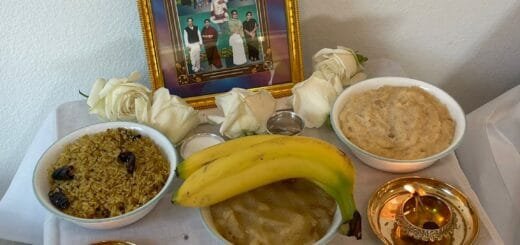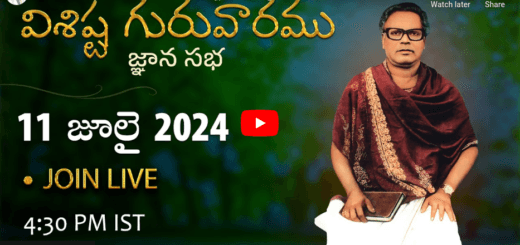Sha Philosophy – Preface
Sri Viswa Viznana Vidya Adhyatmika Peetham is a Divine Institution, was initially at Baghdad, Arabia. Then it moved to Persia and then came to India in 1472 A.D. In India it was established at Delhi and remained there for six generations. The Head of this Institution came to India during the tenure of the Emperor Babur. From Babur to Aurangajeb six generations of Mughal Emperors have ruled India. The heads of this institution (the great master’s lineage) of six generations also remained at Delhi along with Mughal Emperors. Emperor Sha-jahan’s eldest son Prince Dara was a Sufivedantin. Princess Jebunnisa daughter of Emperor Aurangajeb was also a follower of Sufism. The spiritual Master of Princess Jebunnisa was one of the previous Heads of this institution. From this it can be inferred that the Heads of this Divine Institution were the Spiritual Masters of Mughal emperors.
During the tenure of the Mughal Emperor Aurangjeb, owing to religious intolerance he ordered the execution of Sarmad Hussein (Sarmad Shahid), a contemporary to the Head of this Peetham Sri Madin Kabir Sha Sathguru. In pursuance of the Emperor’s order Sarmad Hussein was beheaded (around 1700 A.D). Then an incredulous event occurred! Sarmad Hussein’s trunk walked up to the place where the head was thrown and lifted it with hands and holding it firmly, walked up to the wall, dipped its finger in the cut off head and wrote a curse with blood on the wall which proclaims: This will be the end of the Mughal rule. Consequently Emperor Aurangjeb died in 1707and then the rule of Mughal dynasty declined gradually.
The contemporary Head of this Peetham, Sri Madin Kabir Sha Sathguru had strongly condemned the Emperor’s religious intolerance and the execution of Sarmad Hussein and other religious leaders of His time and left Delhi and reached Hyderabad (around 1700 A.D). Hyderabad Navab Thanesha gave two Jagirs (land gift) to establish this Peetham at Kottam and Tuni to Him. The Heads of this Peetham have made Pithapuram their abode and established this Divine Institution then onwards.
The great Master Madin Kabir Sha Sathguru was the first Head of the Peetham who came to Pithapuram from Hyderabad and established this Peetham at Pithapuram. Sri Madin Kabir Sha was a disciple of the Great Sufi Master Phiran-E-Peer, the descendent and spiritual successor of Prophet Mohammad. Sri Madin Kabir Sha Sathguru had followed the preaching of His Master, performed great penance and accomplished in it .He had number of disciples. Sri Madin Kabir Sha Sathguru was called the “Philosopher from Medina” by his contemporaries. The Heads of this institution were poets. They have composed most sublime poetry in respective languages of the countries, where they had stayed. The great master Madin Kabir Sha Sathguru composed spiritual poetry in Arabic and Parsee languages. History reveals that, his contemporary public, requested him to display a miracle in testimony of his divine power and brought several cartloads of firewood, made a big pyre and asked him to sit on it. He had laid himself on the fire for 3 hours and 12 minutes comfortably and came out of it unhurt as if it was a bed of roses and thus he had shown the power of his abstract contemplation. His first-born son Sri Madharsha Sathguru succeeded him to be the Peethadhipathi (Head of the Institution). Similarly Sri Hasan Miya Sha Sathguru, the first-born son of Sri Madharsha had succeeded him.
Later, he was succeeded by his first-born son Sri Kahene Sha Vali Sathguru, who was a great philosopher. When Sri Kahene Sha Vali Sathguru was at a tender age (about five years old), his father had left the body and got synthesized with cosmic eternity. Hence he was initiated by Sri Akhail Ali Sha Sathguru with the Mahamantra (Mystic syllables), which is the essence of this Peetham. So, Sri Akhail Ali Sha Sathguru had reestablished this Peetham.
When Kahene Sha Vali was a boy, he had a vision of a great saint (Sri Akhail Ali Sha Sathguru ) and in that vision the saint told him,” In your lineage the embodiment of divinity is shining in the form of the Peethadhipathyam (Master-hood of this great seat of Cosmic Wisdom), which is in reality the essence of spiritualism. Prior to you, your father was the Head of this institution. In your childhood itself, he had dropped his body and merged himself with the eternity. It appears to be ceased. Therefore it is necessary for you to exercise authority over the Peetham (Institution) as Peethadhipathi (Head of the Institution). Now I feel it required to reveal this Mahamantra (mystic syllables) to awaken you (into boundless Cosmic Form consisting of the Miraculous Brilliant Divine Light) and reestablish this Peetham. So you may realize this esoteric Truth”. Subsequently, when Kahene Sha Vali was going to school, the great saint who had appeared in his vision, came in person, spoke the same words in the same way, as per that vision and initiated him by granting the same Mahamantra (mystic syllables).
The Peethadhipathis (Heads of the Institution) give the same Mahamantra (mystic syllables), in the same manner, which was granted by Sri Akhail Ali Sha Sathguru to Sri Kahene Sha Vali Sathguru, to their disciples to awaken them. Since then Sri Akhail Ali Sha Sathguru has been honored as Vamsa Guru the Preceptor of the Great Master’s Lineage and will be honored in the same way till the end of this creation. During the tenure of Kahene Sha Vali Sathhguru, he composed a great deal of mystic verse and named it “Kalki Bhagavatam”, which reveals the mystic transformation of soul into Eeswara (God).
In this Peetham, Peethadhipathyam (lordship of the Institution) is transferred from the firstborn son to his firstborn son. The Peethadhipathi is Sathguru (True Master and embodiment of the Truth).
Sri Akhail Ali Sha Sathguru the Spiritual Master of this Great Master’s Lineage showered His blessings on this Peetham and proclaimed that: This Peetham was born along with the Sun and the Moon and will continue in the same manner till they disappear.
Sri Kahene Sha Vali Sathguru’s first-born son Brahmarishi Sri Mohiddin Badsha Sathguru succeeded him and led about eight thousand disciples in his tenure. He was a great scholar in Telugu, Parsee and Sanskrit. He wrote many Telugu spiritual songs “Para Tathwa Kirtanalu”, which reflect his own spiritual experiences.
His first-born son Brahmarishi Umar Ali Sha Sathguru became the sixth head of this Institution. He was a very famous poet. He was a great scholar in Sanskrit, Telugu, Parsee, Urdu, English and many other western languages. He was adorned by many titles like Maha Pandita (Great scholar) Moulavi, Mahakavi (Great poet) etc. The sweetness of his poetry excels that of Kali Dasa, the great poet of Sanskrit. In his tenure twenty thousand disciples were following the Peetham. His poetry named Sufi-Vedanta-Darsam in Telugu is an embodiment of the essence of spiritualism and it establishes the truth that, the living essence (life or spirit), has come in the form of man, is indeed the Rasaswarupa (Miraculous Brilliant Divine Light) of Eeswara (God).
Here are the epitomes of his poetry.
Kanadut paadarasambu tatwikudu bagarambu gavinchu na
tlanumanaaspadamai vinasakaramai yalladu jeevundu bra
hmanuga marchedu trovan chupiti nidhi dhyasambu sandhinchi mee
kanulan vippudu sunyamande hari sankasambu sandhilledun.
Meaning: As mercury alchemizes into gold, the Philosopher (Sathguru) shows the mystic way of transformation of humanity into Brahman (Divinity) to those, who are anguished with doubts about existence of the God in mind, which leads them into mortality. Firmly fix your inner-gaze (Druk or the subtle telescopic eye situated at the center of eye brows), and open your eyes then you will experience the Divine Light of Hari (God) in space.
Ee drusyambula chaatumaatuna mahaasrungara srungatakaa
padambaina janaanushangamu bhavat pratyekatan kendramai
eedaarin janu krindi metlku mahaandhibhutamai yundu ne
naadityendu khagolammrasitin brhmaanandame paaragan
Meaning: This world happens to be the crossroad for the assemblage of the people, who are especially attached to this corporeal world by being self-centered. They continue to remain in such a great darkness. In this way they go down to the bottom most steps by ignoring the magnificent bliss concealed behind this objective world of perception. However, I have unveiled it and found full of eternal bliss by perceiving the Cosmic Form consisting of the sun, the moon and the innumerable stellar systems
In this book the words of this great philosopher are quoted at many places. Readers are requested to understand that, wherever such words are quoted, they are indeed the perpetual words of Dr. Umar Ali Sha, the 6th Head of this Institution
I, Hussain Sha, the first-born son of Brahmarishi Umar Ali Sha Sathguru, took the lordship of the Peetham as Peethadhipathi on10-2-1945. I wrote this book Sha Tatwam (Sha Philosophy) in Telugu. I started writing this book on 9-9-1967 and completed it on 9-9-1968. This book is an Upanishad (Divine message) manifested through my inner voice. At present more than one Lakh twenty thousand (1, 20,000) disciples are following this Peetham.
This book does not criticize any religion. It explicitly speaks and defines how humanity is transformed into Divinity, which is the essence of all religions. The words by which it is composed are of the Upanishad or the Divine inner voice (revelations) heard during the process of Bhavaparinama (the transformation of the feeling of “self (I)” into the Cosmic Form.
In this book many concepts are reiterated at many places to explain them elaborately so that the readers can clearly understand them.
In this book the words; “shape, form, nature, semblance, image, embodiment etc.” are used at many places. Readers are advised to concentrate on that string of words and contemplate, so that they can realize their true meaning. In the light of that inner meaning, if the Sadhaka (seeker) continues to read this book, the spiritual power, embodied in this book will become apparent to him in the form of Tathwam (the essence of theology known as “Thou Art You”).
While reading this book, the readers may get many doubts in their minds. If they analyze them, in their minds, in order to discover the essential features or meaning of the aspects of their doubts, in that inquisitiveness, at a certain point of time, they will certainly experience those aspects of inquiry. At that moment the reader will certainly be delighted.

(Hussain Sha)
Saptama Peethadhipathi
Sri Viswa Viznana Vidyaadhyatmika Peetham
(7th Head of the Institution)











